|
Getting your Trinity Audio player ready...
|
This month our artists include Zuojie Li, Prashanth M.B, Huiyan Zhang, Luis Guallichico and Stephanie Clark.
Mediums include performance art, oils, palette knives, printable screen enamel, stencils, watercolours and moss.

Artist: Zuojie Li
Title: Snail House
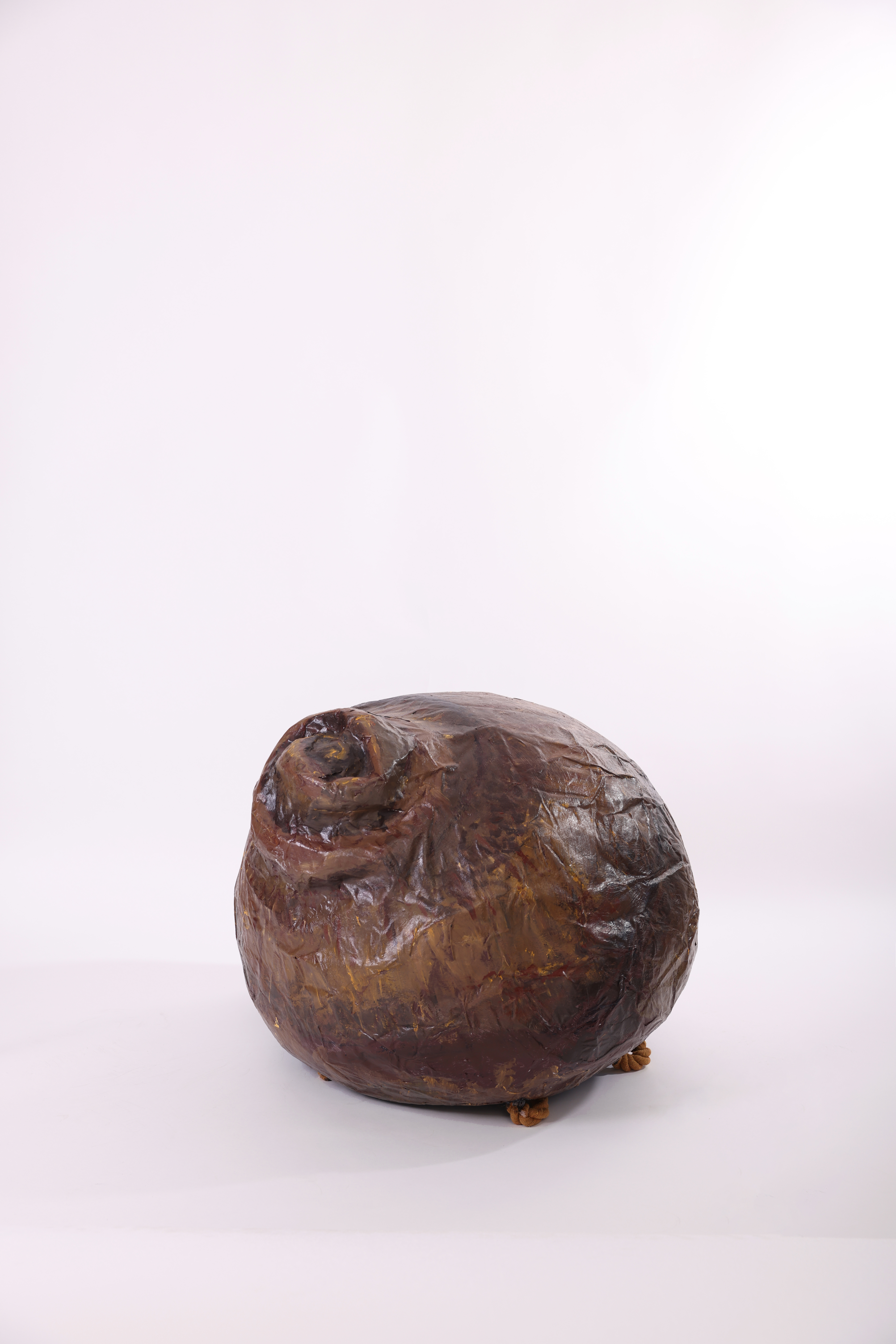
Snail House depicts a snail man’s world in a surreal way, regardless of age or sex. Life in cramped spaces with heavy snail shells on their backs.
When I first entered society, I experienced various “survival” crises. I was busy working during the day and living in a small space after getting off work. Looking at the night view outside the window, I suddenly realised that I was like a small snail with a heavy shell on his back. Being crushed and out of breath. In the area where I live, the road ahead is the most affluent area in Shanghai – Cuihu, where there are all the residences of wealthy people, while the road behind is one of the shabbiest areas, with many types of houses. They are all pavilions.
The pavilion was originally used for storing sundries or as a servant’s room. In the early 20th century, Shanghai’s urban population increased significantly and housing was extremely tight. A large number of pavilions were rented out for profit. Because it is low and narrow, faces north, has poor lighting, and is under a balcony, where it is cold in winter and hot in summer, the living conditions are relatively poor, so the rent is relatively low. Tenants who rent pavilions are usually low-income people who are strapped for cash. Reference: 亭子间 (2021) Wikipedia. Available at: https://zh.wikipedia.org/wiki/%E4%BA%AD%E5%AD%90%E9%97%B4 (Accessed: 25 December 2023).

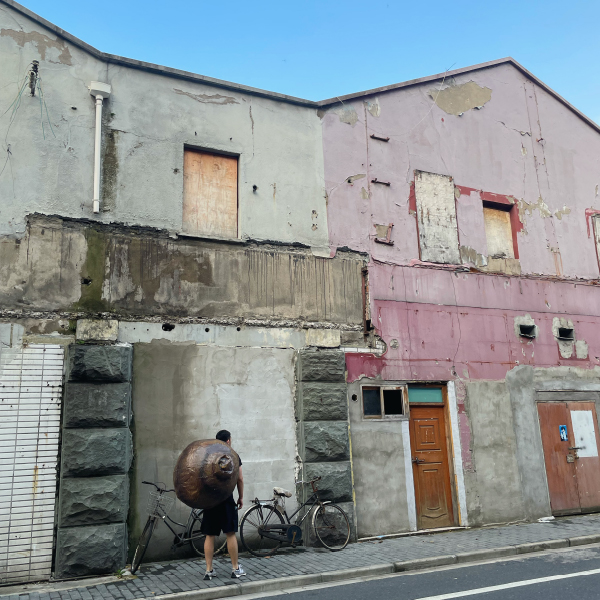

I interviewed some people living in Shanghai. Some of them were security guards, foreign trade workers, and ordinary white-collar workers to understand their living conditions. Then I made an installation that can walk on my back, and performed a walking performance art in a shabby old building in Shanghai and in Shanghai’s most prosperous areas, to reflect the current life of people in big cities.
While executing performance art, I got feedback from diverse individuals. Several observers halted to inquire about the underlying theme of my artistic expression, while others engaged by interacting physically with my artistic representation, such as touching my symbolic “snail shell.” While recording my art, I frequently chance encountered policemen. This occurrence heightened my anxiety levels, particularly amid the backdrop of the COVID-19 pandemic.
Artist: Prashanth M.B
Titles: Hillocks in the Closepet belt, Himalayan abode & Tamarind trees of Nallur.
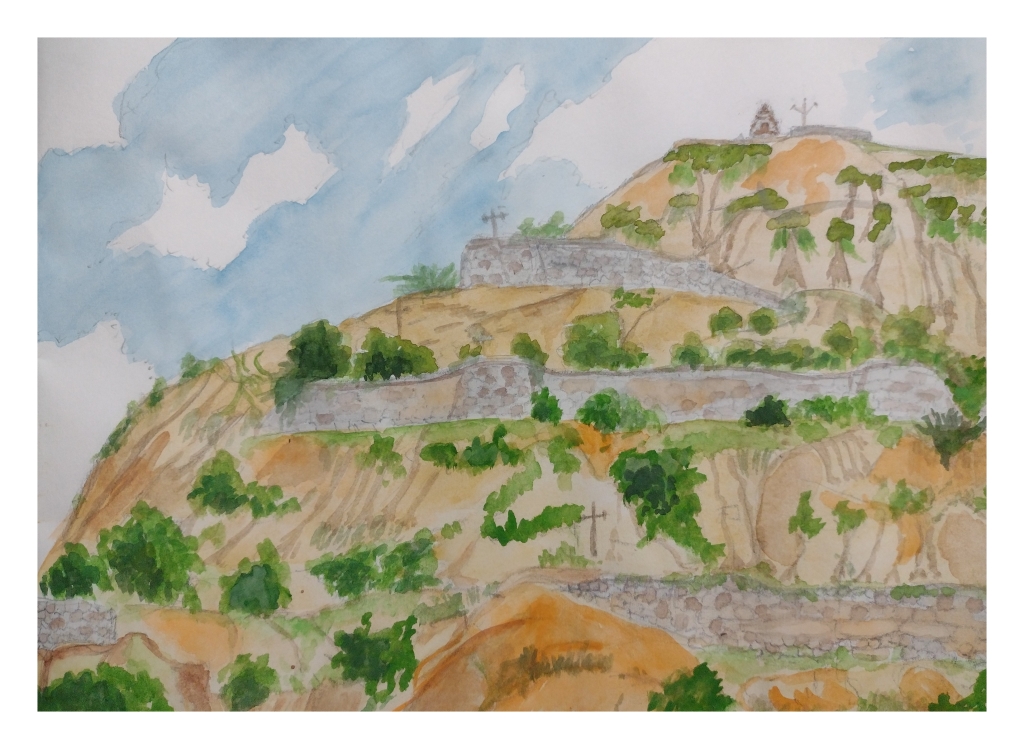
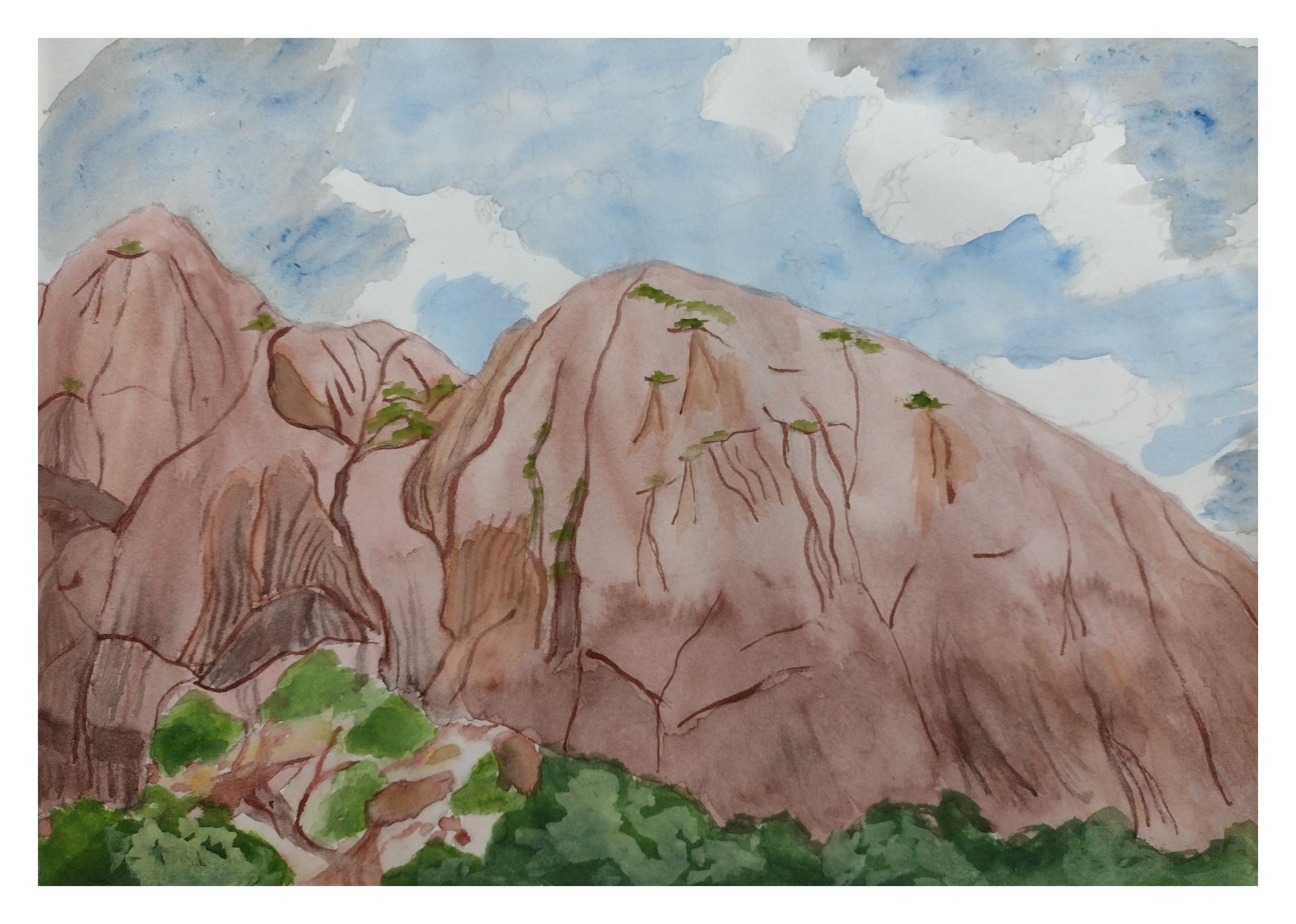
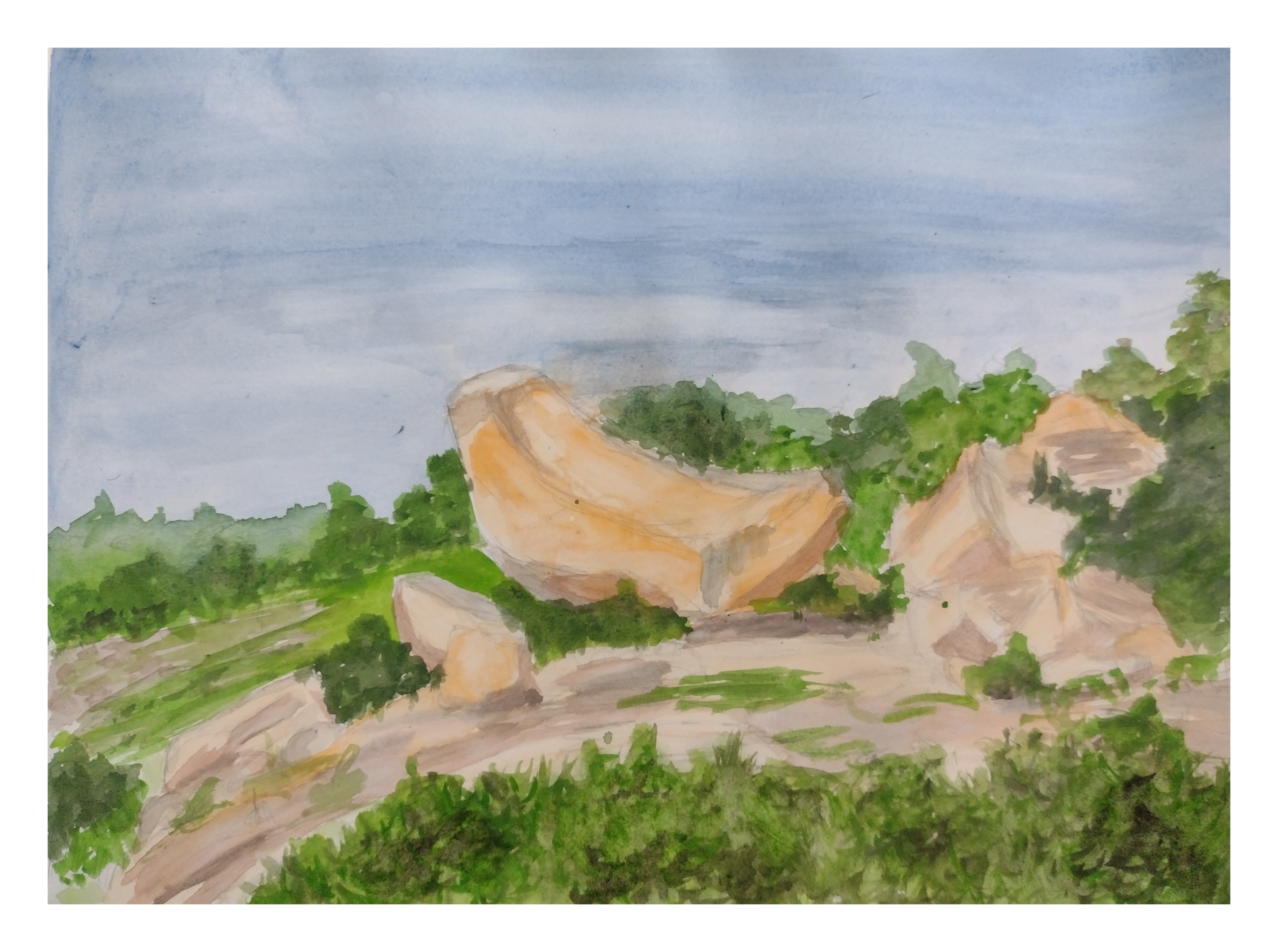
The Peninsular gneiss are rock formations that are distributed over a large part of the southern Indian peninsula and hold many chains of small hillocks covered with tropical thorn and scrub forests. A distinct chain of hillocks in the rock formations, recognized geologically as the Closepet granites run in the north-south direction over a few hundred kilometres beyond densely populated towns, cities and farmlands. Beyond forming huge pale coloured monoliths, the rocks and the crevices including the peripheral crust hold vast stretches of scrub and thorn forests that support mammalian populations of the Sloth Bear, the Leopard and other cats, and some of them along national parks and conservation reserves are critical to the survival of animals such as the Indian Elephant. Forests connecting the hillocks form critical animal corridors for the movement between vast areas of forests. Besides mammals the cliff faces and rock outcrops support wide ranging populations of birds such as the endangered Indian Vulture, the Yellow-throated Bulbul and other species such as the Shaheen/ Peregrine Falcon, Egyptian Vultures and many other life forms. The hillocks on the fringes of the hill chain are threatened by extensive quarrying where the rocks are mined to manufacture building construction materials.
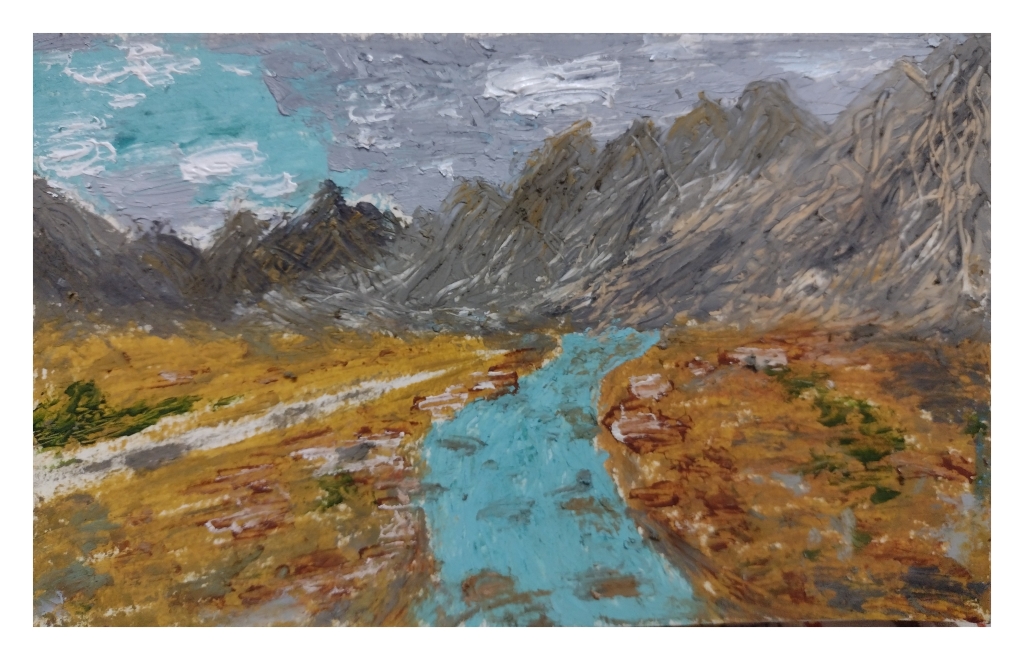
The Himalayas are a lofty chain of mountains in the northern part of the Indian subcontinent and hold some of the highest peaks on the planet. Spanning over a few thousand kilometres from east to west , the snow-capped peaks of the Himalayas and the glaciers they hold, give rise to many rivers, some of which flows into many countries before draining into the Bay of Bengal and the Arabian Sea. The rivers and the mountains together support a myriad range of habitats, lifeforms, people and vegetation types, ranging from the cold deserts and alpine forests in the higher elevations to tropical dry and wet forests along the river course.
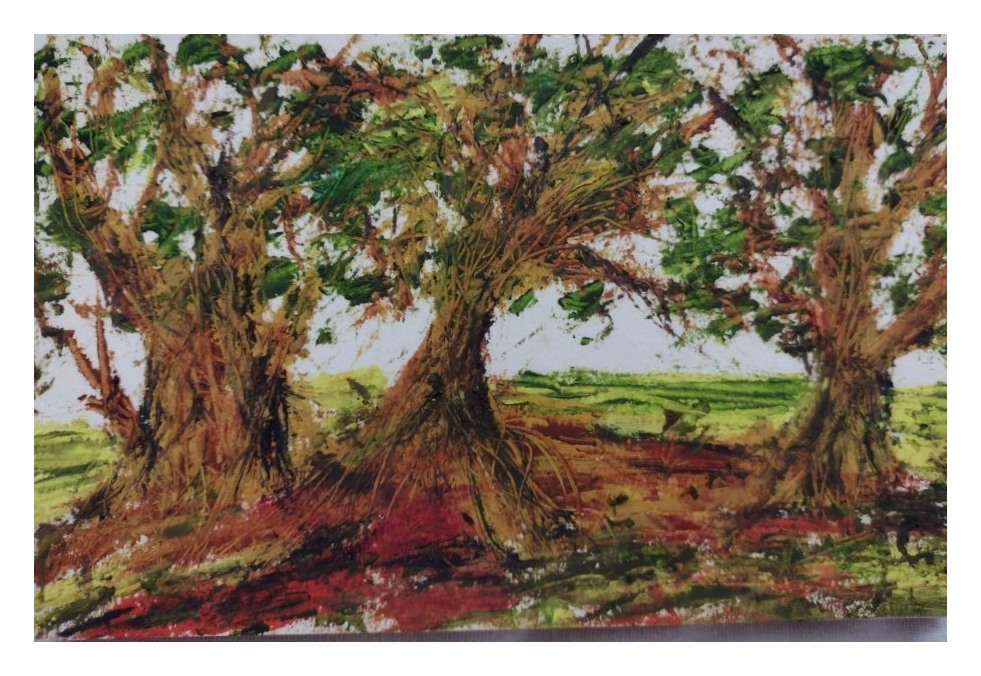
Nallur Tamarind grove situated near the bustling city of Bengaluru is an ancient orchard. The grove holds ageing trees of the species –Tamarindus indicus– which is harvested and used as a culinary item. The fruit is a must to provide the sour taste to many Indian curries and dishes while the inheritance of the trees and grove dates back to a historical period. While undisturbed large trees in the tropical forests may last a few hundred years, the dating of the trees in Nallur through carbon dating methods were found to be four hundred years old. Besides being amongst centuries old living specimens, the grove has a few hundred trees and a historical monument within its boundaries. The girth of the trees are very imposing and offers a curious case for plant biologists and enthusiasts.
Follow Prashanth M.B’s work on https://fieldknotes.blogspot.com and https://myscribblepadblog.wordpress.com/ Also on Instagram @kembhoota and X: PBadarinath
Artist: Huiyan Zhang
Titles: Mushrooms at night, Hidden Mushrooms, Fungi.
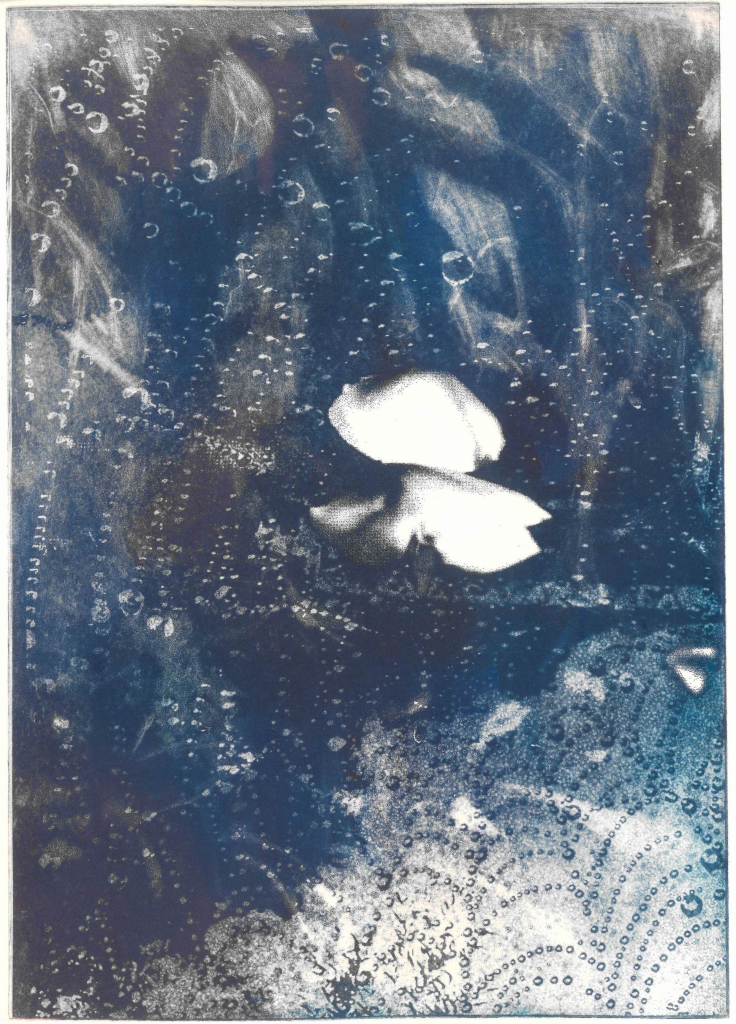
I have a keen interest in ideas of the entanglement of nature, ecology of plant forms –specifically fungi – and its relationship to human experience, of loss and rebirth, decay and regrowth.
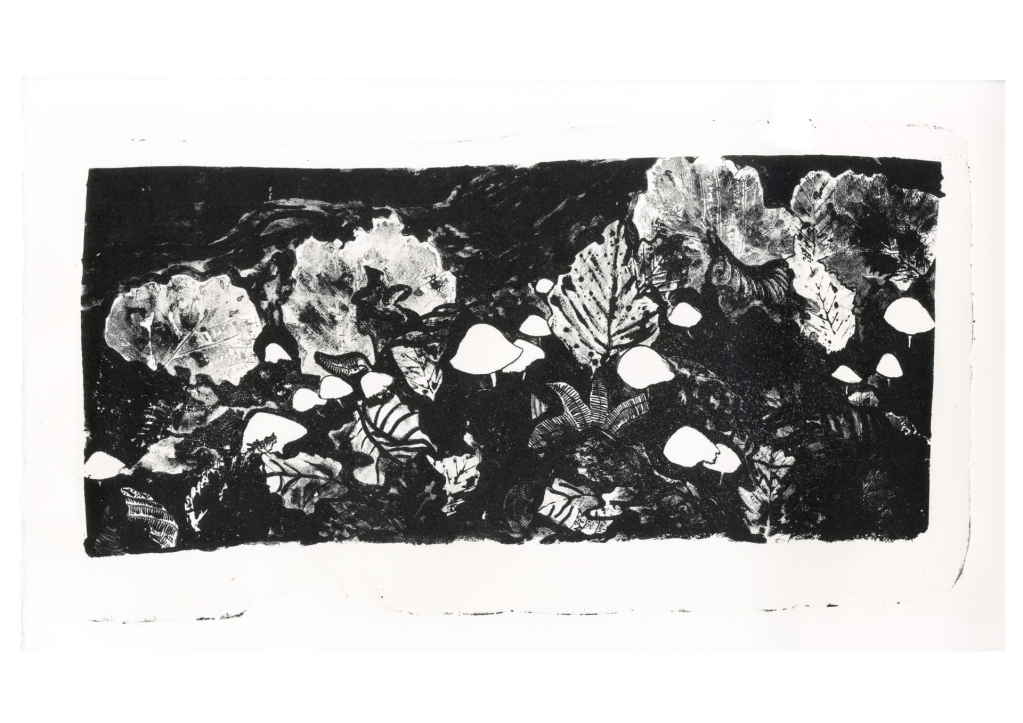
In my artistic practice, I immerse myself in nature, I go out into nature and use photography and drawing to pull out forms, and then take them into printmaking processes to allow the drawing to transform into new images –through process, material and surface.
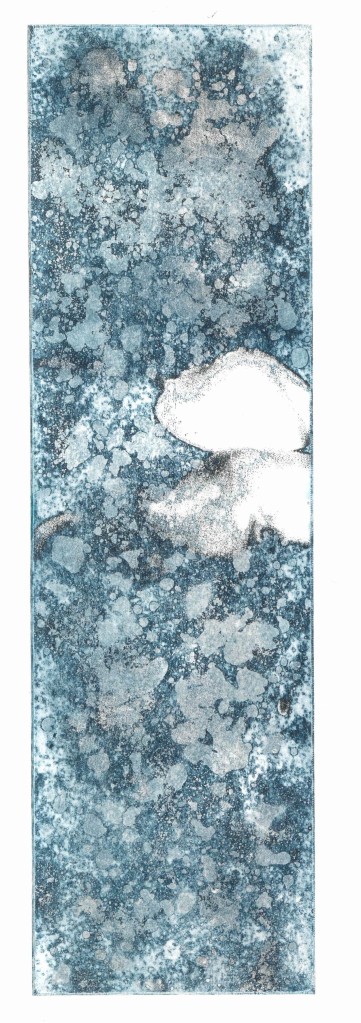
Follow Huiyan Zhang on Instagram @ivyhuiyan_zhang
Artist: Luis Guallichico
Titles: Linum dolomiticum, Sporobolus cryptandrus & Cypripedium calceolus.
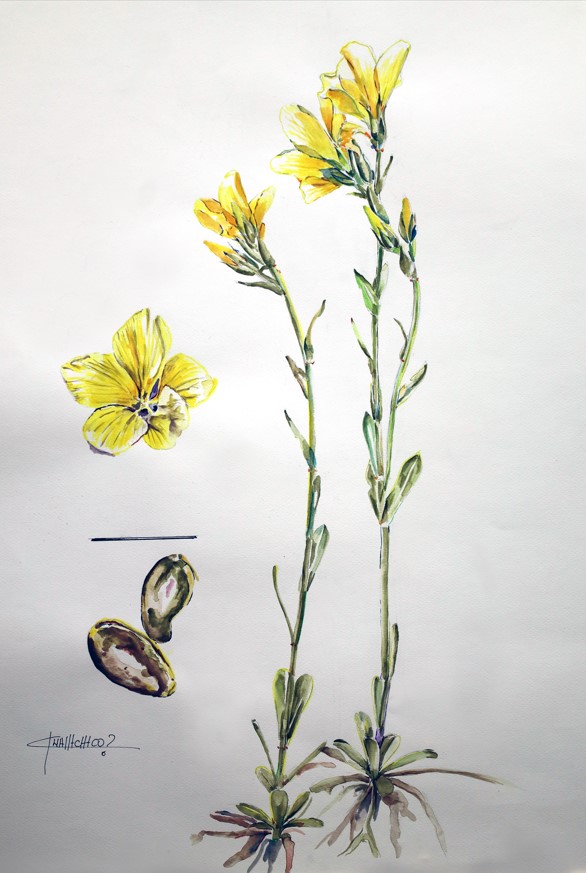
My ecological journey started with active participation in ongoing research focused on the invasive species Sporobolus cryptandrus, threatening grasslands in Hungary’s arid region. This collaboration became an enlightening experience, awakened my interest in illustrating species diversity through pictorial techniques. Recognizing the species’ dual impact (beneficial in some areas, harmful in others) enriched my perspective. Beyond this realization, the journey uncovered the profound inherent beauty of Hungary’s flora.

Venturing into Hungarian forests created an emotional connection, which was my motivation for expressing nature through watercolours. I chose this medium to portray the unique characteristics of various species, such as the exquisite lady’s slipper orchid, Cypripedium calceolus. This artistic endeavour aimed to capture the perfect harmony between the orchid and its environment, serving as a poignant reminder to preserve the rich floral diversity of the region.
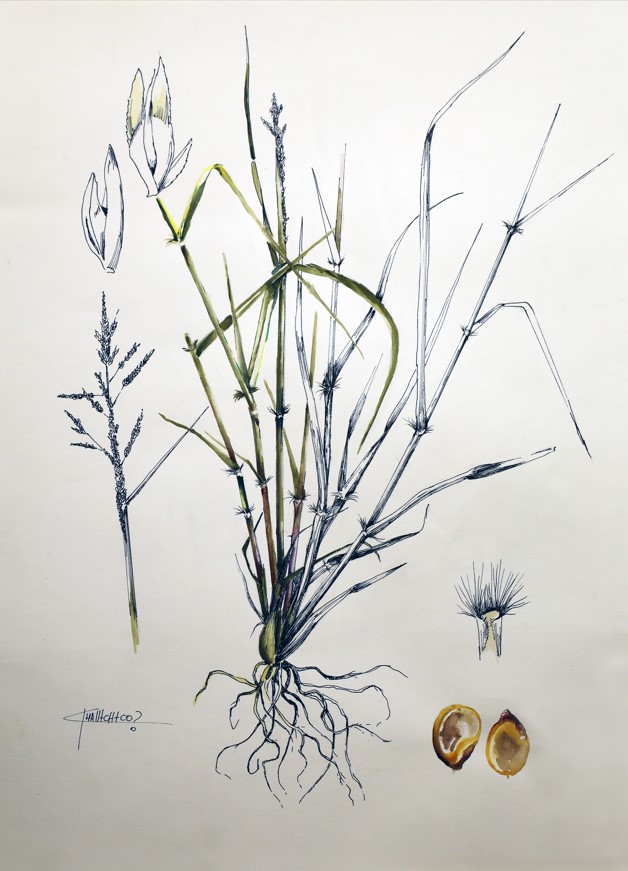
The charm and beauty of Linum dolomiticum, a protected species in Hungary’s Szénás Hills, were depicted in a pictorial piece using delicate yellow and green tones. This emphasized the significance of caring for these natural jewels.
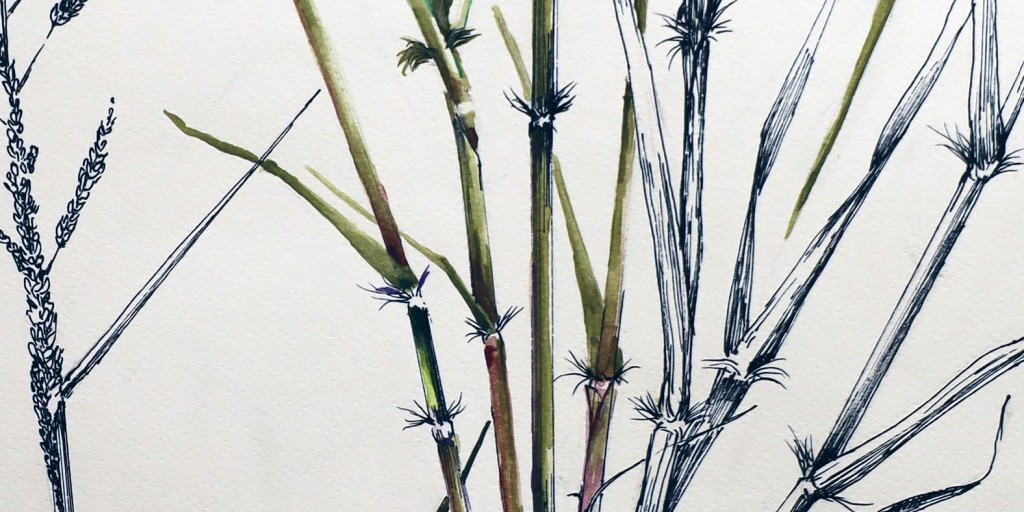
My admiration extends to botanists and ecologists, particularly the HUN-REN-UD Functional and Restoration Ecology Research Group led by Professor Peter Torok. Their unwavering commitment to preserving natural habitats in the region serves as a profound inspiration, highlighting our collective responsibility in safeguarding the ecological treasures defining Hungary’s unique landscapes.
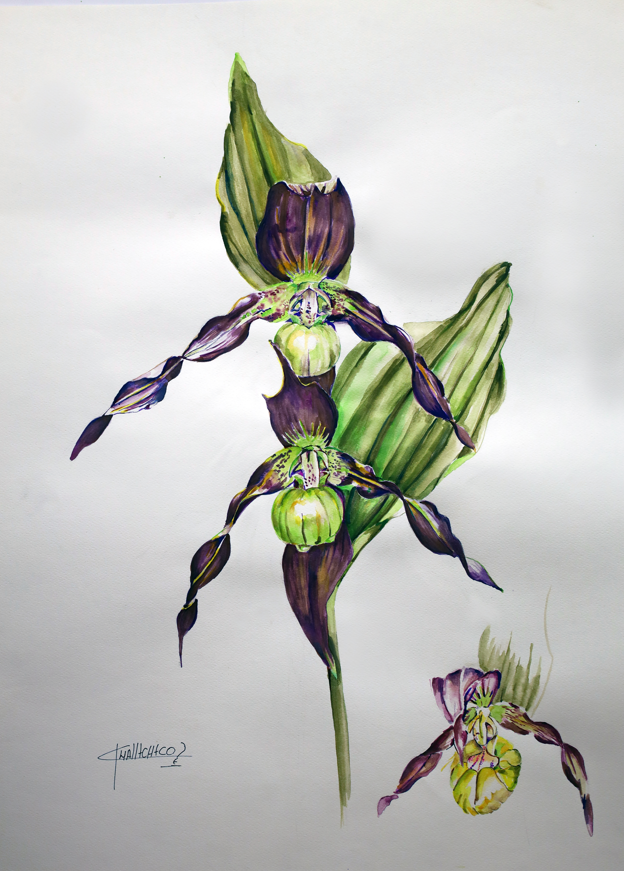
Ecuadorian artist Luis Guallichico lives in Hungary, Debrecen. Luis is part of the HUN-REN-UD Functional and Restoration Ecology Research Group.


Cypripedium calceolus and Linum dolomiticum (details).
Stephanie Clark
Title: Embrace of the Unloved
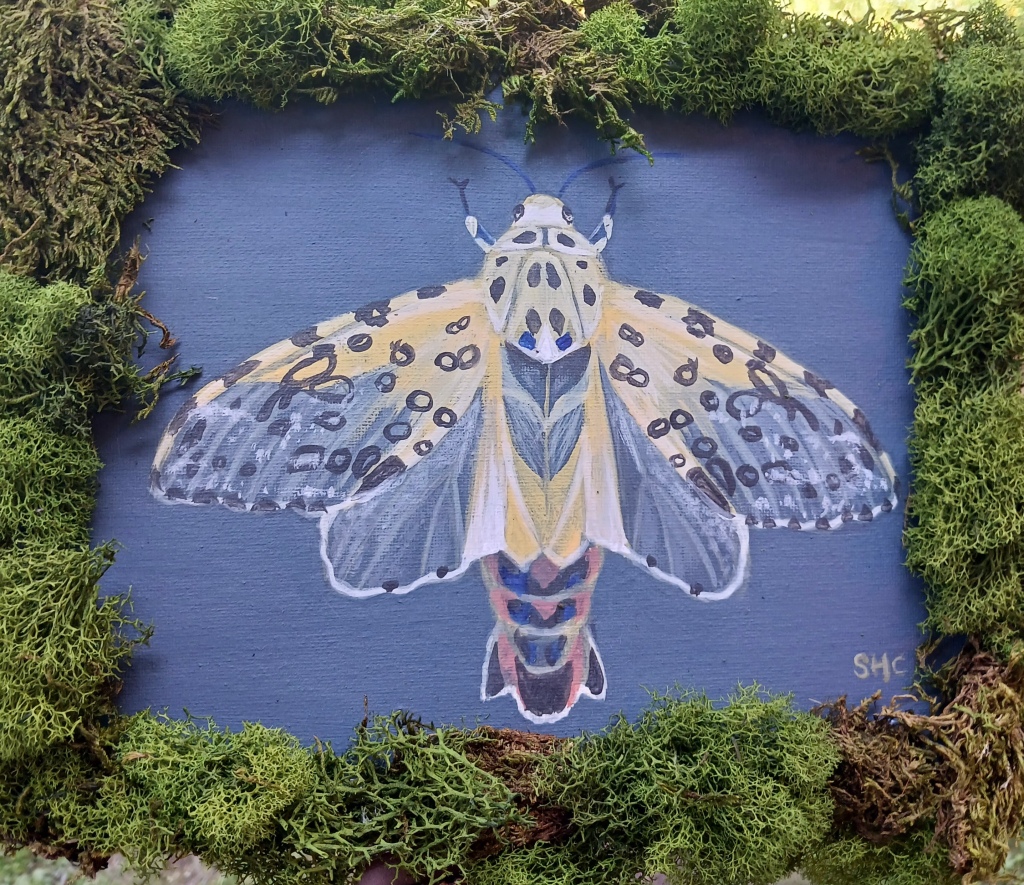
Embrace of the Unloved is a series of five paintings created to raise awareness of organisms that are traditionally unloved by our society. The main painting is 30″ × 40″ and details a young person peacefully surrounded by creatures that are looked down upon in our society and/or suffering as a result of human activity.
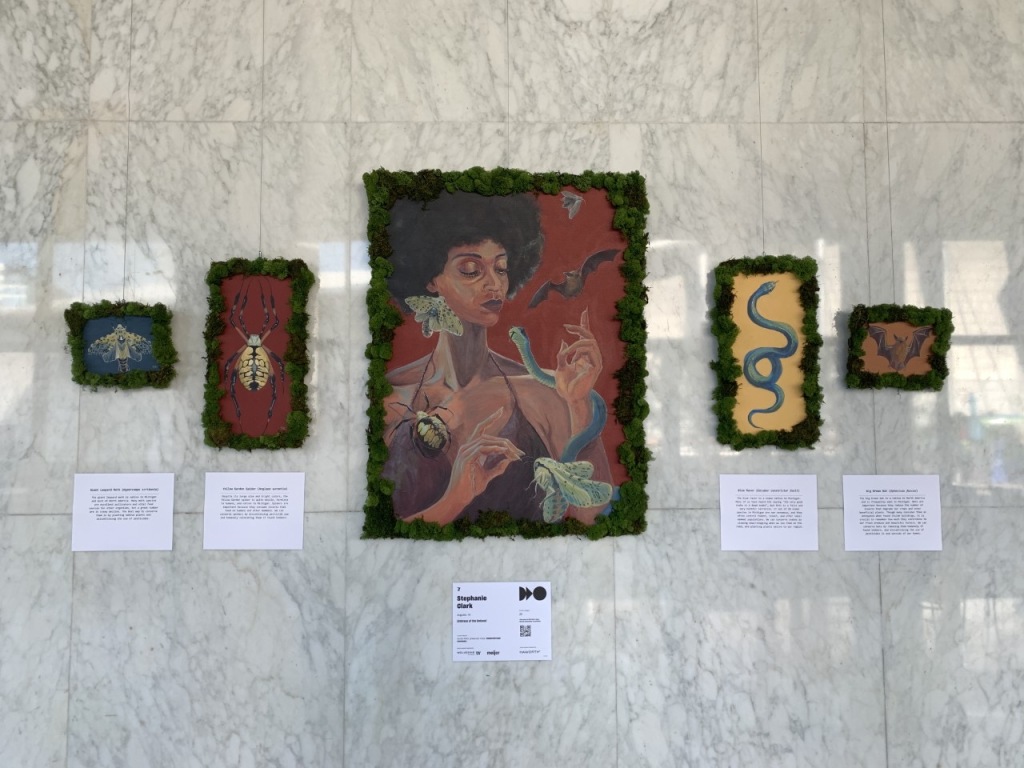
The remaining four paintings are detailed close-ups of species found in the main piece. They are displayed next to info cards on how we can conserve and protect these species best. A layer of preserved moss encroaches the edge of each canvas to emphasize how our existence is predicated by nature – regardless of whether we find every aspect of it appealing.
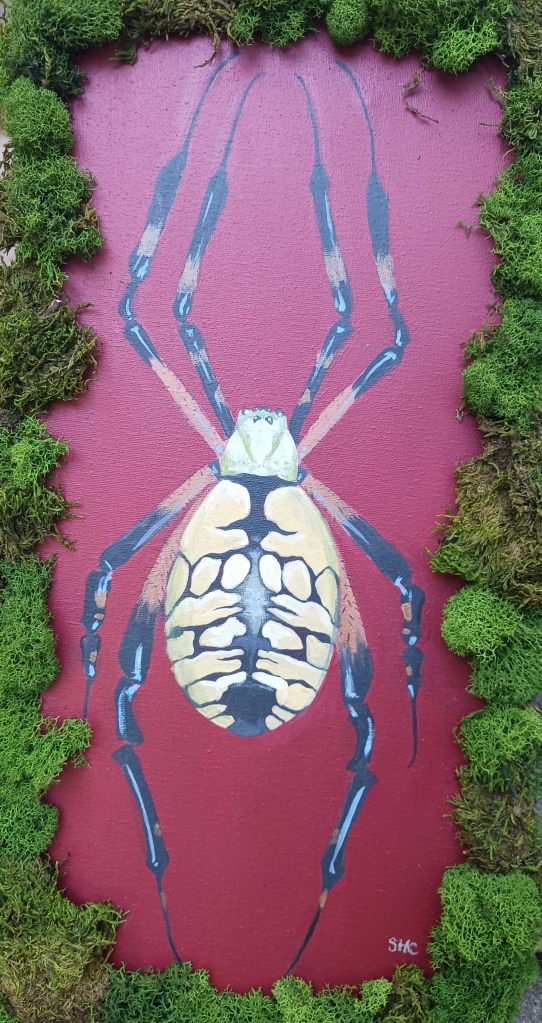
To view more art and follow Stephanie Clark check out her Instagram @steph_clarks_art
Thank you to all our artists! For more art galleries please check out:


